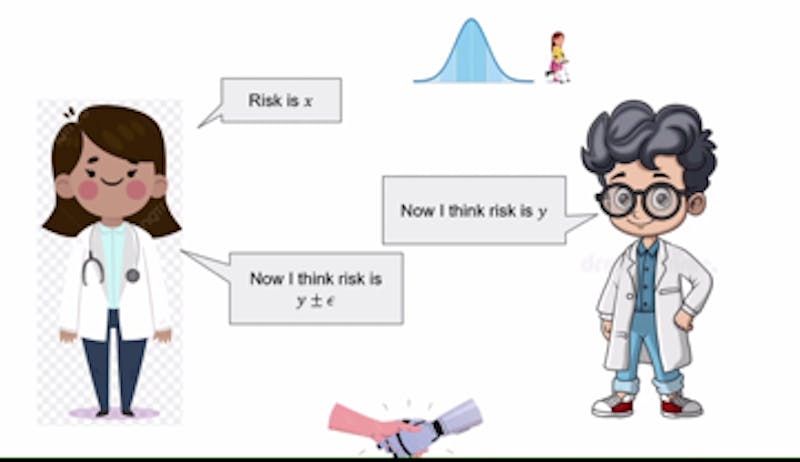Science
Advancing Human-AI Collaboration: Insights from Aaron Roth

On October 23, 2025, the Whiting School of Engineering’s Department of Computer Science at Johns Hopkins University hosted a lecture by Aaron Roth, a professor of computer and cognitive science at the University of Pennsylvania. The talk, titled “Agreement and Alignment for Human-AI Collaboration,” explored the findings from three significant papers addressing how artificial intelligence can enhance decision-making processes across various fields.
Roth emphasized the increasing role of AI in sectors like healthcare, particularly in assisting medical professionals with patient diagnoses. He illustrated this with a scenario where AI analyzes data such as past diagnoses and symptoms to predict health outcomes. The human doctor evaluates these predictions, utilizing their expertise and observational skills to either support or challenge the AI’s conclusions.
The interaction between AI and healthcare professionals is not straightforward. Roth highlighted that when discrepancies arise, both the doctor and the AI can engage in a structured dialogue, reiterating their viewpoints for a finite number of rounds. This iterative process fosters a shared understanding, as both parties recognize that each possesses unique knowledge that can contribute to a more accurate conclusion.
This collaborative approach relies on what Roth terms a “common prior,” where both the AI and the human start with the same foundational assumptions about the world, despite having access to different evidence. He described this dynamic as Perfect Bayesian Rationality, where both parties can acknowledge each other’s knowledge while still holding distinct pieces of information.
Nevertheless, Roth noted the challenges inherent in achieving this agreement. Establishing a common prior can be difficult, particularly given the complexities of real-world scenarios. For instance, when multiple dimensions of data, such as hospital diagnostic codes, come into play, reaching consensus can be even more challenging.
To navigate these complexities, Roth introduced the concept of calibration, akin to assessing the accuracy of a weather forecast. He explained that calibration tests can help determine whether an AI system is providing reliable predictions. In the context of human-AI interaction, he discussed “conversation calibration,” where the AI adjusts its claims based on the responses provided by the doctor in previous exchanges. For example, if the AI estimates a 40% risk associated with a treatment and the doctor suggests it is 35%, the AI’s subsequent claim would reflect this feedback, ultimately guiding both parties toward a mutually agreeable conclusion.
While the initial discussion assumed that both the doctor and AI share the same goal of patient welfare, Roth acknowledged that this might not always be the case. He illustrated this by considering scenarios where the AI is developed by a pharmaceutical company, which may have its own interests in promoting specific treatments. In such cases, he recommended that doctors consult multiple AI models from different providers to mitigate potential biases. This competitive environment would encourage each AI developer to enhance their models, striving for alignment with the doctors’ objectives.
Roth concluded his talk by addressing the concept of real probabilities—those that accurately reflect the underlying dynamics of the world. While precise probabilities are ideal, he argued that it is often sufficient for probabilities to remain unbiased within limited conditions. By leveraging data-driven estimates under these conditions, doctors and AI can collaboratively reach informed decisions regarding diagnoses and treatment strategies.
Through Roth’s insights, the evolving relationship between human expertise and artificial intelligence becomes increasingly clear. As both entities learn from one another, they can form effective partnerships that enhance healthcare outcomes and decision-making processes, paving the way for a future where technology and human judgment work in harmony.
-

 Top Stories4 weeks ago
Top Stories4 weeks agoNew ‘Star Trek: Voyager’ Game Demo Released, Players Test Limits
-

 World4 weeks ago
World4 weeks agoGlobal Air Forces Ranked by Annual Defense Budgets in 2025
-

 World1 month ago
World1 month agoMass Production of F-35 Fighter Jet Drives Down Costs
-

 World4 weeks ago
World4 weeks agoElectrification Challenges Demand Advanced Multiphysics Modeling
-

 Science4 weeks ago
Science4 weeks agoTime Crystals Revolutionize Quantum Computing Potential
-

 Business4 weeks ago
Business4 weeks agoGold Investment Surge: Top Mutual Funds and ETF Alternatives
-

 Top Stories4 weeks ago
Top Stories4 weeks agoDirecTV to Launch AI-Driven Ads with User Likenesses in 2026
-

 Entertainment4 weeks ago
Entertainment4 weeks agoFreeport Art Gallery Transforms Waste into Creative Masterpieces
-

 Lifestyle4 weeks ago
Lifestyle4 weeks agoDiscover Reese Witherspoon’s Chic Dining Room Style for Under $25
-

 Health4 weeks ago
Health4 weeks agoGavin Newsom Critiques Trump’s Health and National Guard Plans
-

 Business4 weeks ago
Business4 weeks agoUS Government Denies Coal Lease Bid, Impacting Industry Revival Efforts
-

 Lifestyle4 weeks ago
Lifestyle4 weeks agoLia Thomas Honored with ‘Voice of Inspiration’ Award at Dodgers Event









